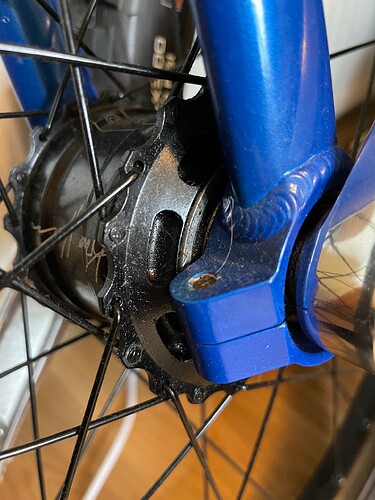The photos here should give some idea I feel perhaps.
But I took two close ups over the flanges on my 200 series (so a good bit older than newer versions but still should give you an idea)
This is probably the main reason I’d stick to 3X for a schlumpf regardless of tension on the new disc hubs.
Guess you could always try using different types of spokes - that was discussed here:
